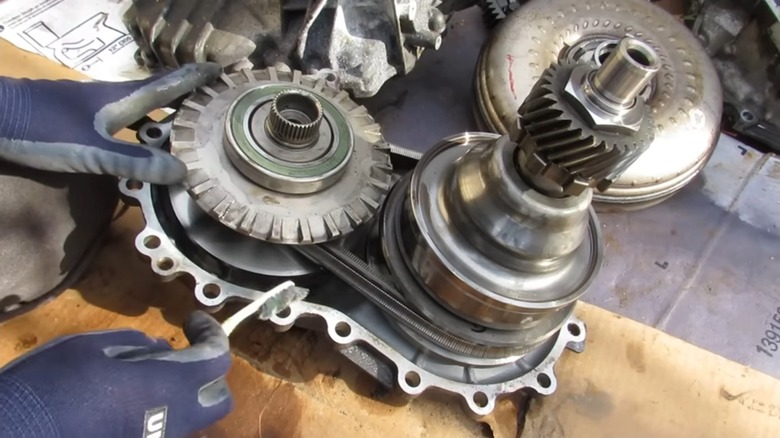Experiencing CVT Transmission Shudder? Here Are The Possible Causes
Any sort of unusual stuttering movement from your vehicle while driving is a cause for concern, and it has been widely reported among owners of various CVT transmissions. This problem could be due to low transmission fluid, which is crucial for reducing friction and cooling components. The amount of pressure inside a CVT while running, can reach nearly 1000 psi, generating significant heat, vs a traditional automatic that may only operate at 150 psi.
Another issue that may cause jittery performance from your CVT is a belt issue. These belts consist of multiple steel bands that hold many separate, thin, but robust metal pieces in place, called elements. However, if this belt becomes overheated, it can be damaged, causing it to slip and create a jerking sensation.
In a more specific example, a Mitsubishi Motors Technical Service Bulletin describes some vehicles with a CVT-8 transmission, may shudder as a result of the hydraulic pressure circuit reacting improperly. Despite this, these transmissions do offer some advantages, but due in part to some high-profile negative attention, CVTs get a bad rap.
Some driver's report transmission problems, but it's a misunderstanding of CVT operation
When your car starts acting up, the logical next step is a trip to the mechanic or dealer. But as some drivers have reported, when taking in their car for service, the problem couldn't be replicated. One Impreza owner (via Impreza5.com) explained, "it rumbles, vibrating hard enough to rattle the dashboard. It's driving me crazy! I got the 'can't recreate the problem' and green light on all inspections from both the Subaru dealer and an independent shop."
One of the most significant hurdles facing drivers who are new to CVTs, is that the typical rhythm, sound, and feeling of a traditional transmission is absent. This is one of the main differences when comparing a CVT transmission vs. an automatic transmission, among others. In fact, the experience for some behind the wheel can be almost disorienting, as it seems things are out of step.
CVTs often produce a continual whirring sound, in place of the rising and falling pitch of a traditional automatic during acceleration, which can lead to the appearance of an issue. For instance, a driver may press the gas pedal to the floor, causing the CVT to immediately find the upper power band and remain there, even as the vehicle continues to increase speed, leading to some unfamiliar with CVTs to conclude slipping is occurring.
What you can do to help reduce CVT trouble
One of the best ways to prolong your CVT is regular maintenance, which includes changing out the fluid per manufacturer's recommendations. For example, the 2025 Nissan Rogue owner's manual recommends replacing the transmission fluid every 60,000 miles, so be sure to verify the correct maintenance interval for your specific vehicle. Also remember, CVTs have their own unique transmission fluid, and using anything other than the recommended type could result in damage. For example, for the aforementioned Rogue, the automaker recommends genuine Nissan CVT fluid NS-3 or equivalent and any damage caused by using improper CVT fluid isn't covered by warranty.
While it can be tempting to opt for the cheapest shop when undergoing maintenance or repairs, your average mechanic may not have the necessary experience with CVTs. In fact, those technicians who work on CVT transmissions are specially certified to do so. The reason for additional training has to do with the complexity of a CVT and an understanding of how to properly handle its components.
For example, parts of the belt can be unintentionally dented, and even squeezing the belt a bit too tight can strain the outer edges, potentially causing it to snap after being installed. In addition to neglecting fluid changes, there are some other bad habits to avoid for extending the life of your car's CVT transmission.


